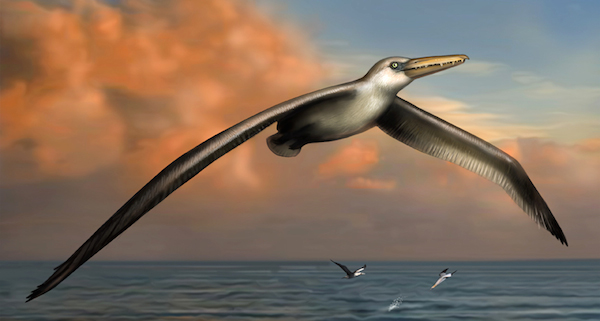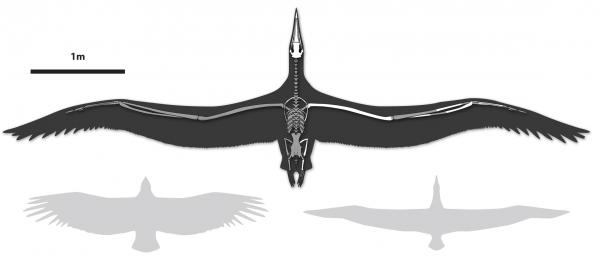
The bird with the largest wingspan is the Wandering Albatross, which has an amazingly huge wingspan of 11 ft 11 in. That’s taller than two men of average height stacked on top of each other from head to two. (Here’s a fun comparison of the albatross’ wingspan and humans.)
Now prepare to have your mind blown.
A recently discovered ancient bird species has a staggering wingspan of about 21 feet, making it the largest known flying bird ever to exist.
The fossil for this massive flier was actually uncovered during the renovation of the Charleston airport in the 1980s, but it was cataloged along with thousands of other specimens at the Charleston Museum. It was only recently revisited this year when Daniel Ksepka, the curator of science at the Bruce Museum in Greenwich, identified the fossil as a new species: pelagornis sandersi.

Interestingly enough, the closest relatives to this huge bird are chickens and ducks. I found this quote from Kspeka in a WNPR article fascinating: “We’re talking about two of the kind of most mundane familiar birds that you see on a farm or at the park or on your dinner table,” he said, “and they are the relatives of the largest bird that ever flew.”
It’s remarkable that this ancient bird was able to even get off the ground at such a huge size. It’s not clear whether it needed to get a running start or whether it could just flap its wings, but once it was in the air, its large wings allowed for great soaring capabilities.
I’m sure more information will continue to come out about this huge bird, but I’d be curious to know more about its eating habits (so far scientists figure that it eats fish while gliding) and nesting information, including the size of the egg.


